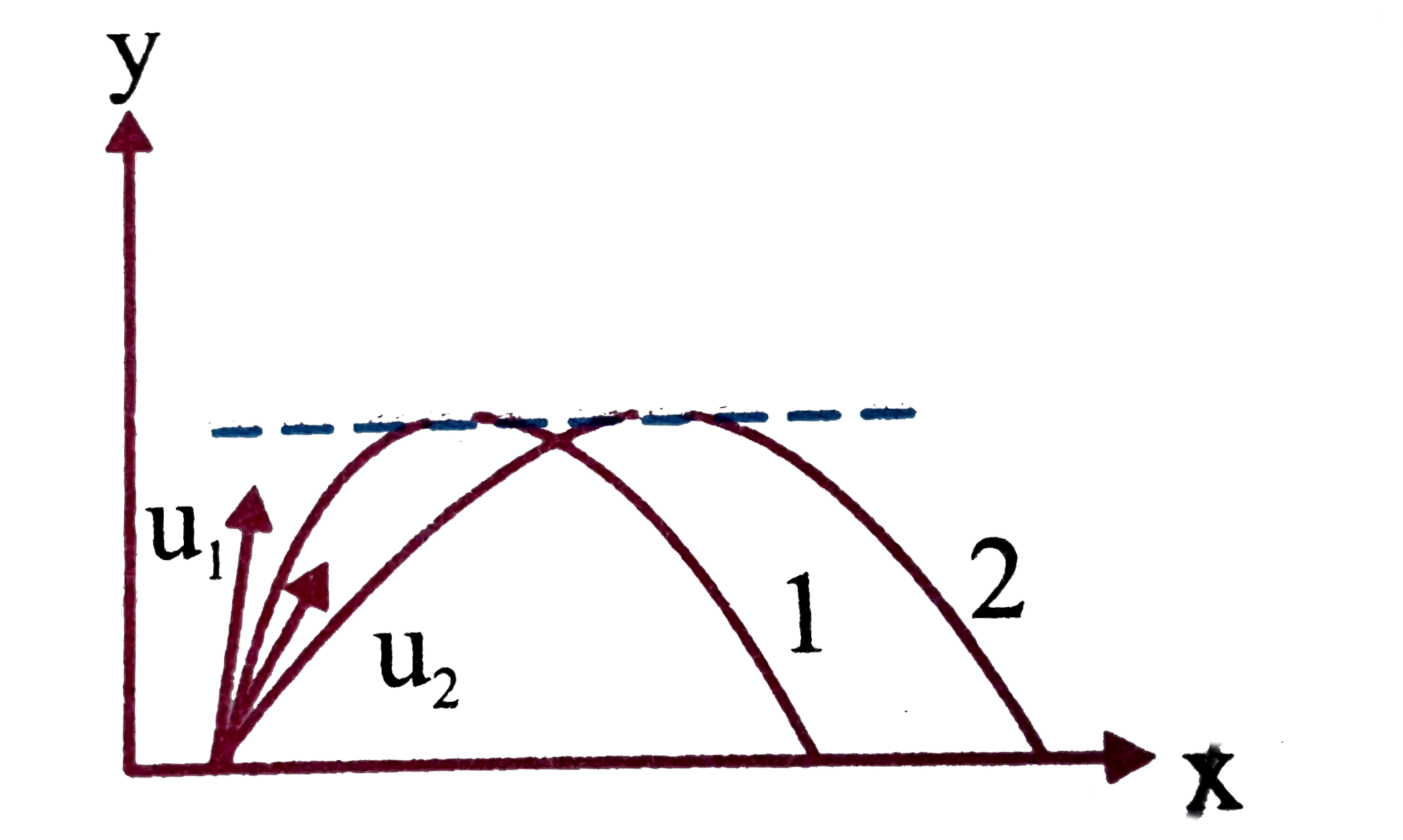A particle is executing SHM if u1andu2 are the speeds of the particle at distances x1andx2 from the equilibrium position, shown that the frequency of oscillation
f=12π(u21−u22x22−x21)
To derive the frequency of oscillation for a particle executing Simple Harmonic Motion (SHM), we start with the relationship between speed, displacement, and frequency.
1. Understanding the relationship in SHM:
In SHM, the speed u of a particle at a distance x from the equilibrium position is given by the formula:
u=ω√A2−x2
where ω=2πf is the angular frequency, and A is the amplitude of the motion.
2. Expressing speeds at two different positions:
For two positions x1 and x2, the speeds u1 and u2 can be expressed as:
u1=ω√A2−x21
u2=ω√A2−x22
3. Squaring both equations:
Squaring both expressions gives:
u21=ω2(A2−x21)
u22=ω2(A2−x22)
4. Rearranging the equations:
Rearranging the equations to find A2:
A2=u21ω2+x21
A2=u22ω2+x22
5. Setting the two expressions for A2 equal:
Since both expressions equal A2, we can set them equal to each other:
u21ω2+x21=u22ω2+x22
6. Rearranging to isolate ω2:
Rearranging gives:
u21−u22ω2=x22−x21
Thus,
ω2=u21−u22x22−x21
7. Finding the frequency f:
Since ω=2πf, we substitute:
(2πf)2=u21−u22x22−x21
This simplifies to:
4π2f2=u21−u22x22−x21
8. Solving for frequency f:
Finally, we solve for f:
f2=u21−u224π2(x22−x21)
Taking the square root gives:
f=12π
⎷u21−u22x22−x21
Final Result:
Thus, we have shown that the frequency of oscillation is given by:
f=12π(u21−u22x22−x21)
In SHM, the speed u of a particle at a distance x from the equilibrium position is given by the formula:
u=ω√A2−x2
where ω=2πf is the angular frequency, and A is the amplitude of the motion.
For two positions x1 and x2, the speeds u1 and u2 can be expressed as:
u1=ω√A2−x21
u2=ω√A2−x22
Squaring both expressions gives:
u21=ω2(A2−x21)
u22=ω2(A2−x22)
Rearranging the equations to find A2:
A2=u21ω2+x21
A2=u22ω2+x22
Since both expressions equal A2, we can set them equal to each other:
u21ω2+x21=u22ω2+x22
Rearranging gives:
u21−u22ω2=x22−x21
Thus,
ω2=u21−u22x22−x21
Since ω=2πf, we substitute:
(2πf)2=u21−u22x22−x21
This simplifies to:
4π2f2=u21−u22x22−x21
Finally, we solve for f:
f2=u21−u224π2(x22−x21)
Taking the square root gives:
f=12π
⎷u21−u22x22−x21
Thus, we have shown that the frequency of oscillation is given by:
f=12π(u21−u22x22−x21)
Topper's Solved these Questions
- BOOK - SL ARORACHAPTER - OSCILLATIONSEXERCISE - Exercise233videos
OSCILLATIONS
- BOOK - SL ARORACHAPTER - OSCILLATIONSEXERCISE - Problem23videos
OSCILLATIONS
- BOOK - SL ARORACHAPTER - MOTION IN ONE DIMENSIONEXERCISE - problems for self practice66videos
MOTION IN ONE DIMENSION
- BOOK - SL ARORACHAPTER - Physical worldEXERCISE - Exercise49videos
Physical world
Similar Questions
A particle is moving in SHM in a straight line. When the distance of the particle from equilibrium position has values x1 and x2 , the corresponding values of velocities are u1 and u2. Show that time period of vibration is T=2π[x22−x21u21−u22]1/2
View SolutionTwo cars start off to race with velocities u1 and u2 and travel in a straight line with uniform accelerations f1₁ and f2 . If the race ends in a dead heat, then the length of the course is 2(u1−u2)(u1f2−u2f1)(f1−f2)2
View Solution
Knowledge Check
- Question 1 - Select One
A particle is executing S.H.M. Ifu1 and u2 are the velocitiesof the particle at distancesx1 andx2 from the mean position respectively, then
AT=2π√x1+x2u1+u2BT=2π ⎷x22+x21u21+u22Cω= ⎷u22−u21x21−x22D2π√u1x2u2x1 - Question 2 - Select One
A particle is executing a linear S.H.M. v1 and v2 are as speeds at dis"tan"ces x1 and x2 from the equilibrium position. What is its ampiltude of oscillation ?
AA= ⎷v21x22−v22x21v21−v22BA= ⎷v21−v22v21x22−v22x21CA=v21x22−v22x21v21−v22DA= ⎷v21x21−v22x22v21−v22 - Question 3 - Select One
A particle executing harmonic motion is having velocities v1 and v2 at distances is x1 and x2 from the equilibrium position. The amplitude of the motion is
A ⎷v21+x2−v22x1v21−v22B ⎷v21x21−v22x22v21+v22C ⎷v21x22−v22x21v21−v22D ⎷v21x22+v22x21v21+v22
(a) The motion of the particle in simple harmonic motion is given by x=asinωt. If its speed is u, when the displacement is x1 and speed is v, when the displacement is x2, show that the amplitude of the motion is
A=[v2x21−u2x22v2−u2]1/2
(b) A particle is moving with simple harmonic motion is a straight line. When the distance of the particle from the equilibrium position has the values x1 and x2 the corresponding values of velocity are u1 and u2, show that the period is
T=2π[x22−x21u21−u22]1/2View SolutionTwo trains on the same line are approaching one another with velocities u1 and u2 respectively. When there is a distance x between them, each is seen from the other. It is just possible to avoid a collision if
u21f2+u22f1=2f1f2x
where f1 and f2 are the greatest retardations which brakes can produce in the respective trains.View SolutionA particle is moving with SHM in a straight line. When the distance of the particle from the equilibrium position has valuesx1 andx2, the corresponding value of velocities are u1 and x1. Show that the time period of oscillation is given by t = 2....
View SolutionPotential energy of a particle at position x is given by U=x2−5x. Which of the following is equilibrium position of the particle?
View SolutionTrajectories of two projectiles are shown in figure.Let T1 and T2 be the time periods and u1 and u2 their speeds of projection.Then
 View Solution
View Solution

